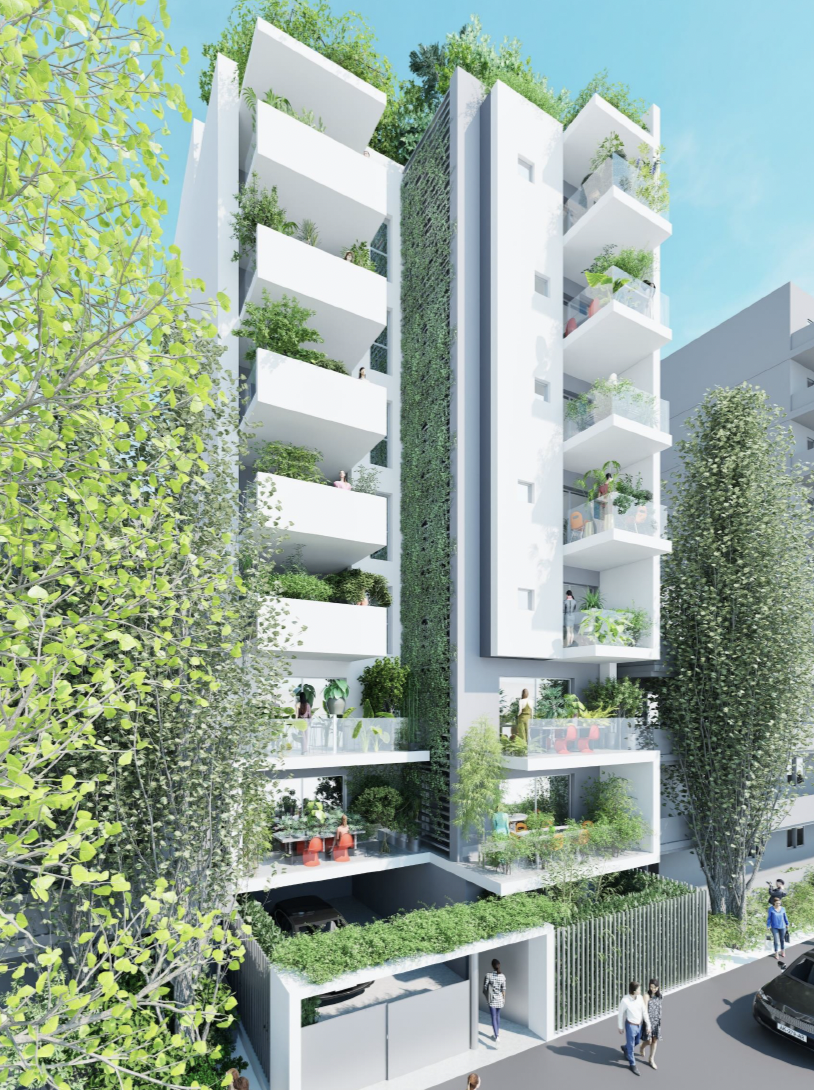Technology is rapidly changing the way we live, work, and even buy property. In the real estate industry, smart technology is revolutionizing the way transactions are made and properties are managed. Sustainable development is also reshaping the property landscape in cities like Chicago, with a focus on creating environmentally-friendly and energy-efficient spaces. The rise of shared living and co-working spaces is redefining the concept of community and convenience. Virtual reality is now offering immersive property tours and transforming marketing strategies. Additionally, the growing trend of remote work is having a significant impact on both residential and commercial properties. In this blog post, we will explore these trends and discuss their implications on the real estate market in Chicago. We will also delve into affordable housing initiatives and emerging neighborhoods that present exciting investment opportunities.
Smart technology transforming the real estate industry
Smart technology is revolutionizing the way the real estate industry operates. With advancements in artificial intelligence, the Internet of Things (IoT), and data analytics, the traditional methods of buying, selling, and managing properties are being transformed. These technologies offer a range of benefits, from enhanced security and energy efficiency to improved property management and personalized experiences for tenants. In this blog post, we will explore how smart technology is reshaping the real estate industry and the potential opportunities it presents.
One of the key areas where smart technology is making a significant impact is in property management. The IoT allows for the integration of various smart devices, such as thermostats, security systems, and lighting controls, into a centralized platform. This enables property managers to remotely monitor and control these devices, resulting in improved energy efficiency, reduced maintenance costs, and enhanced security. With the ability to collect and analyze data from these devices, property managers can gain valuable insights and make informed decisions to optimize building performance.
Moreover, smart technology is also transforming the way properties are marketed and leased. Virtual reality (VR) technology has emerged as a game-changer, allowing potential buyers and tenants to take immersive virtual tours of properties from the comfort of their homes. VR tours provide a realistic and interactive experience, enabling individuals to visualize and explore every corner of a property. This not only saves time and resources for both buyers and sellers but also increases the likelihood of making informed decisions.
Additionally, data analytics plays a crucial role in leveraging smart technology in the real estate industry. By analyzing large volumes of data from various sources, such as property listings, market trends, and historical sales data, real estate professionals can identify investment opportunities, predict market fluctuations, and make data-driven decisions. This ultimately leads to greater efficiency and profitability in the industry.
- Factors driving the adoption of smart technology in real estate:
- Increased demand for energy-efficient and sustainable properties
- Growing need for advanced security systems and surveillance
- Desire for personalized and seamless property management experiences
- Rising customer expectations for digital solutions and convenience
In conclusion, smart technology is transforming the real estate industry by offering a range of benefits, including improved property management, enhanced marketing and leasing strategies, and data-driven decision-making. With the continued advancements in technology, the possibilities for innovation in the real estate industry are endless. Real estate professionals and investors who embrace and leverage smart technology will be at a significant advantage in this rapidly evolving industry.
Sustainable development reshaping Chicago’s property landscape
Sustainable development is playing a crucial role in reshaping Chicago’s property landscape. As the city continues to grow and evolve, it is becoming increasingly important for real estate developers and professionals to prioritize sustainability in their projects. From green building practices to renewable energy integration, sustainable development is not only benefiting the environment but also creating new opportunities for innovation and economic growth.
One of the key aspects of sustainable development in Chicago is the focus on green building practices. Developers are incorporating environmentally-friendly features in their designs, such as efficient insulation, energy-efficient appliances, and sustainable materials. These green buildings not only reduce the carbon footprint but also provide healthier living and working spaces for occupants. The city is also encouraging the use of renewable energy sources, such as solar panels, to power buildings, further reducing the reliance on fossil fuels.
In addition to green building practices, sustainable development in Chicago is also reshaping the property landscape through the promotion of green spaces. The city is dedicated to increasing the number of parks, gardens, and open spaces that not only enhance the quality of life for residents but also contribute to urban biodiversity and mitigate the effects of climate change. These green spaces also provide opportunities for recreational activities, community gatherings, and improve overall well-being.
Benefits of Sustainable Development in Chicago’s Property Landscape
The shift towards sustainable development in Chicago’s property landscape brings numerous benefits. Firstly, it helps conserve natural resources and reduces greenhouse gas emissions, contributing to a cleaner and healthier environment. Sustainable buildings also have lower utility costs, saving money for both developers and occupants. Additionally, the incorporation of green spaces enhances the overall aesthetic appeal of the city and improves residents’ physical and mental health.
Challenges and Opportunities
While sustainable development in Chicago is progressing, there are still challenges to overcome. The initial costs of implementing green building practices can be higher, making it important for developers to consider long-term benefits. Collaboration and partnerships between government agencies, developers, and communities are crucial for the successful implementation of sustainable development initiatives.
Despite the challenges, sustainable development in Chicago presents numerous opportunities for real estate investors. The demand for environmentally-friendly buildings and communities is growing, offering potential for higher property values and rental income. Additionally, sustainable projects may qualify for various incentives and certifications, attracting more investors and tenants.
In conclusion
Sustainable development is reshaping Chicago’s property landscape, bringing a host of benefits for both the environment and the community. Through green building practices and the promotion of green spaces, the city is taking steps towards a more sustainable and livable future. While challenges exist, the opportunities for real estate investment and innovation are vast. By prioritizing sustainability, Chicago is setting an example for other cities to follow, creating a more inclusive and resilient built environment.
Co-living and co-working spaces: The rise of shared living
Co-living and co-working spaces have become increasingly popular in recent years as more individuals seek flexible and collaborative living environments. These shared living concepts bring together like-minded individuals who share not only living spaces but also workspaces, creating a unique sense of community and collaboration.
One of the main drivers behind the rise of co-living and co-working spaces is the changing nature of work. With the advent of remote work and freelancing, traditional office spaces are no longer the only option for professionals. Many individuals now have the freedom to work from anywhere, and co-working spaces provide them with a professional and productive environment.
Moreover, co-living spaces offer a range of benefits for residents. From shared amenities such as kitchens and communal areas to organized social events and activities, these spaces foster a sense of belonging and create opportunities for networking and collaboration. This sense of community is particularly appealing to millennials and young professionals who value experiences and connections.
- Flexibility: Co-living and co-working spaces offer flexible lease terms, allowing individuals to rent on a monthly or even weekly basis. This flexibility is especially attractive to those who may need to relocate frequently for work or personal reasons.
- Affordability: Shared living spaces often come at a lower cost compared to renting a traditional apartment or office space. By sharing expenses such as rent and utilities, residents can enjoy a more affordable living arrangement while still benefiting from quality amenities.
- Collaboration: The integration of workspaces within co-living spaces promotes collaboration and creativity. Residents have the opportunity to connect and collaborate with like-minded individuals, potentially leading to professional growth and new opportunities.
| Pros of Co-living and Co-working Spaces | Cons of Co-living and Co-working Spaces |
|---|---|
| 1. Enhanced sense of community | 1. Lack of privacy |
| 2. Cost-effective living | 2. Limited personal space |
| 3. Opportunities for networking and collaboration | 3. Potential noise and distractions |
Overall, co-living and co-working spaces offer a new way of living and working that aligns with the evolving needs and preferences of today’s individuals. By providing flexible arrangements, fostering a sense of community, and promoting collaboration, these shared living concepts are reshaping the way we live and work.
Virtual reality revolutionizing property tours and marketing
Virtual reality (VR) technology has been increasingly revolutionizing the way property tours are conducted and properties are marketed in the real estate industry. With the advancements in smart technology, VR has become more accessible and affordable, allowing potential buyers and tenants to experience properties in an immersive and interactive manner from the comfort of their own homes. This has significantly transformed the traditional property tour process, making it more convenient and efficient for both buyers and sellers.
One of the key benefits of virtual reality property tours is that they offer a realistic and lifelike experience to potential buyers. Through VR headsets or even just a smartphone app, users can navigate through a property as if they were physically present, exploring every room, hallway, and outdoor space. They can get a sense of the layout, the size of the rooms, and the overall atmosphere, helping them make more informed decisions even before visiting the property in person.
In addition to providing a realistic tour experience, VR technology has also revolutionized property marketing strategies. Real estate agents and developers can create stunning virtual tours that showcase the property’s features and unique selling points, such as high-quality finishes, spacious interiors, or scenic views. These virtual tours can be easily shared on websites, social media platforms, and property listing portals, reaching a wider audience and generating more interest in the property.
Furthermore, virtual reality has opened up new possibilities for remote property viewing, especially for international or out-of-town buyers. Instead of relying on static images or videos, potential buyers can now virtually visit multiple properties within a short span of time, regardless of their location. This has greatly reduced the need for physical travel and saved both time and money for buyers and sellers alike.
- Improved convenience and efficiency for property tours.
- Realistic and immersive experience for potential buyers.
- Enhanced marketing strategies and wider audience reach.
- Opportunities for remote property viewing.
| Advantages | Disadvantages |
|---|---|
| Convenience and time-saving | Cost of VR technology implementation |
| Greater accessibility for remote buyers | Potential limitations in experiencing tactile elements |
| Increased engagement and interest | Dependence on technology and internet connection |
In conclusion, virtual reality technology has brought significant advancements to property tours and marketing in the real estate industry. The convenience, realistic experience, and wider audience reach provided by VR have transformed the way properties are showcased and viewed. As VR continues to evolve and become more accessible, it is expected to play an even greater role in reshaping the future of property tours and marketing.
The impact of remote work on residential and commercial properties
Remote work has become increasingly popular in recent years, with more and more individuals enjoying the flexibility and convenience it offers. This shift in work culture has had a significant impact on various aspects of our lives, including the real estate industry. Both residential and commercial properties have been affected by the rise in remote work, and new opportunities and challenges have emerged as a result.
One of the key impacts of remote work on residential properties is the changing needs and preferences of homeowners and renters. With the ability to work from anywhere, many individuals are no longer tied to a specific location when choosing where to live. This has led to a shift in demand for housing, with a growing preference for properties that offer more space, amenities, and a favorable work environment. Home offices, high-speed internet connections, and flexible living spaces have become increasingly important to remote workers, and properties that cater to these needs have seen a surge in popularity.
On the commercial side, the rise of remote work has presented both challenges and opportunities. With fewer individuals needing to commute to a physical office space, there has been a decrease in demand for traditional office buildings. This has led to a rise in coworking spaces and shared offices, where professionals can come together to work and collaborate in a flexible and cost-effective environment. Additionally, some commercial property owners have adapted their spaces to cater to remote workers, offering amenities such as dedicated workspaces, meeting rooms, and networking opportunities.
- Increased demand for properties with home office spaces
- Preference for properties with amenities that support remote work
- Growth of coworking spaces and shared offices
- Adaptation of commercial properties to cater to remote workers
The impact of remote work on the real estate industry extends beyond just residential and commercial properties. It also affects the broader community and urban planning. With more individuals working remotely, there is a potential decrease in demand for housing in urban centers, as people can now choose to live further away from the cities. This opens up opportunities for urban revitalization and the development of suburban and rural areas. It also poses challenges for transportation infrastructure, as fewer people need to commute daily, potentially reducing the need for extensive public transportation systems.
| Impact of Remote Work on Properties | Implications |
|---|---|
| Residential Properties |
|
| Commercial Properties |
|
| Community and Urban Planning |
|
In conclusion, remote work has had a significant impact on both residential and commercial properties. The changing needs and preferences of individuals working remotely have led to an increased demand for properties that offer amenities and a favorable work environment. On the commercial side, the rise of remote work has presented both challenges and opportunities, with a decrease in demand for traditional office spaces but a rise in coworking and flexible office solutions. Additionally, the broader community and urban planning have been affected, with potential opportunities for urban revitalization and changes in transportation infrastructure. As remote work continues to shape our work culture, it will undoubtedly continue to transform the real estate industry.
Affordable housing initiatives for a more inclusive Chicago
The city of Chicago has long been known for its vibrant neighborhoods and diverse population. However, as the cost of living continues to rise, many residents of the city find themselves struggling to find affordable housing. In response to this pressing issue, several initiatives have been implemented to make housing more accessible and inclusive for all residents of Chicago.
One such initiative is the creation of affordable housing programs, which aim to provide safe and affordable housing options for low-income individuals and families. These programs often include the construction or renovation of affordable housing units, as well as the provision of rental assistance for those in need. By increasing the availability of affordable housing, these initiatives help to ensure that all residents of Chicago have a place to call home.
In addition to affordable housing programs, there has also been a push to promote mixed-income communities in Chicago. These communities, which include a mix of affordable and market-rate housing, strive to create a more inclusive environment where individuals from different socioeconomic backgrounds can live side by side. This not only helps to combat segregation and inequality, but also fosters a sense of community and shared responsibility among residents.
Another key aspect of affordable housing initiatives in Chicago is the focus on transit-oriented development. This approach seeks to create affordable housing options near public transportation hubs, making it easier for residents to access jobs, schools, and other essential services. By reducing the need for car ownership and promoting public transit use, these initiatives not only make housing more affordable, but also contribute to a more sustainable and environmentally friendly city.
Furthermore, the city of Chicago has also partnered with nonprofit organizations and community development corporations to provide financial assistance and support to low-income individuals and families. These organizations offer a range of services, including credit counseling, rental assistance, and homebuyer education, to help individuals achieve and maintain stable housing. By working together, these partnerships play a vital role in creating a more inclusive and equitable housing market in Chicago.
Overall, the affordable housing initiatives in Chicago are essential for creating a more inclusive city where all residents have access to safe and affordable housing. Through the construction of affordable housing units, the promotion of mixed-income communities, the focus on transit-oriented development, and the support provided by nonprofit organizations, progress is being made towards achieving this goal. However, there is still much work to be done, and it is important for both the government and the community to continue working together to ensure that affordable housing remains a priority in the future.
- Affordable housing programs
- Mixed-income communities
- Transit-oriented development
- Partnerships with nonprofit organizations
| Initiative | Description |
|---|---|
| Affordable housing programs | Provide safe and affordable housing options for low-income individuals and families |
| Mixed-income communities | Create inclusive communities with a mix of affordable and market-rate housing |
| Transit-oriented development | Create affordable housing near public transportation hubs |
| Partnerships with nonprofit organizations | Provide financial assistance and support to low-income individuals and families |
Real estate investment opportunities in emerging neighborhoods
The real estate market is constantly evolving and investors are always on the lookout for emerging neighborhoods that offer great investment opportunities. Investing in real estate can be a lucrative venture, but it requires careful research and analysis. In this blog post, we will explore the various factors to consider when looking for investment opportunities in emerging neighborhoods.
Location is key
When it comes to real estate investments, location plays a crucial role. Emerging neighborhoods are often areas that are undergoing revitalization or experiencing growth and development. Identifying neighborhoods with potential for appreciation in property values is essential. Look for neighborhoods that are close to amenities such as schools, parks, shopping centers, and public transportation. Proximity to major highways or transportation hubs can also be a significant advantage.
Research the local market
Before investing in an emerging neighborhood, it is important to conduct thorough market research. Analyze the current property market trends, such as average property prices, rental rates, vacancy rates, and demand-supply dynamics. Understanding the local market will give you insight into the potential for growth and profitability. Look for indicators of economic stability and future development plans in the neighborhood.
Consider the potential for gentrification
Gentrification is the process of urban renewal and the influx of middle-class residents into a neighborhood. This can have a significant impact on property values and rental income. Look for signs of gentrification in emerging neighborhoods, such as new businesses opening, renovations and improvements to existing properties, and an increase in young professionals or artists moving into the area. Gentrification can lead to increased demand for housing and rental properties, making it an attractive investment opportunity.
Ensure a thorough due diligence
When investing in real estate, conducting a thorough due diligence is vital. This includes getting a property inspection, reviewing legal documents, and assessing any potential risks or liabilities. Additionally, consider factors such as the neighborhood’s crime rate, infrastructure, and access to public services. Engaging the services of a real estate agent or attorney who specializes in the local market can provide valuable guidance.
Diversify your portfolio
Lastly, it is recommended to diversify your real estate investment portfolio by investing in multiple emerging neighborhoods. This can help mitigate risks and capitalize on the growth potential of different areas. By spreading your investments across neighborhoods with varying characteristics, you can benefit from the unique opportunities each one offers.
Investing in real estate in emerging neighborhoods can be a rewarding venture if approached with careful analysis and consideration. With the right research, a keen eye for potential, and a diversified portfolio, investors can take advantage of the growth and development in these areas. Remember to always stay informed about market trends and seek professional advice when needed.
Frequently Asked Questions
How is smart technology transforming the real estate industry?
Smart technology is transforming the real estate industry by allowing for greater automation and control of various aspects of a property. For example, smart home devices can help with energy efficiency, security, and convenience for homeowners and tenants.
How is sustainable development reshaping Chicago’s property landscape?
Sustainable development is reshaping Chicago’s property landscape by promoting environmentally friendly practices and energy-efficient buildings. This includes initiatives such as green building certifications, renewable energy usage, and the integration of sustainable design principles in new construction projects.
What is the rise of shared living and co-working spaces?
The rise of shared living and co-working spaces is a trend where individuals share living spaces or workspaces with others. This allows for cost savings, collaboration, and a sense of community. Co-living spaces provide furnished apartments with shared amenities, while co-working spaces offer shared offices and resources for freelancers and remote workers.
How is virtual reality revolutionizing property tours and marketing?
Virtual reality is revolutionizing property tours and marketing by providing potential buyers and renters with immersive experiences. Instead of physically visiting a property, individuals can use virtual reality headsets to explore the space and get a realistic sense of the layout and design. This technology helps save time and resources for both buyers and sellers.
What is the impact of remote work on residential and commercial properties?
The impact of remote work on residential and commercial properties is significant. With more people working from home, there is a greater demand for home offices, flexible workspaces, and reliable internet connectivity. This trend also affects the commercial real estate market, as companies may downsize their office spaces or opt for more flexible lease terms.
What are affordable housing initiatives for a more inclusive Chicago?
Chicago has implemented various affordable housing initiatives to promote inclusivity. These include incentives for developers to include affordable housing units in their projects, rent control measures, and subsidies for low-income individuals and families. The goal is to ensure that housing remains affordable and accessible for all residents of the city.
What are real estate investment opportunities in emerging neighborhoods?
Emerging neighborhoods often offer attractive real estate investment opportunities due to their potential for growth and appreciation. These areas may benefit from new infrastructure projects, revitalization efforts, or changing demographics. Investors should conduct thorough research and analysis to identify emerging neighborhoods with potential for long-term appreciation and rental demand.
EDITOR
Categories
Recent Articles

NotteGlobal’s May 2024 Real Estate Report: A Comprehensive Analysis of Turkey’s Market Trends
June 22, 2024

New Immigration Policy in the US: A Major Step for Family Unity
June 21, 2024

Second Largest Investor Group in Greece: Turks
June 14, 2024

Exploring the Hidden Gems of Athens Riviera: A Guide to Luxurious Neighborhoods
June 3, 2024

Economic Stability and Growth in Turkey
May 31, 2024

Turkey’s Housing Sales Statistics for April 2024: A Comprehensive Analysis
May 24, 2024

BNP Paribas Forecasts End-of-Year USD/TRY Rate
May 3, 2024

Significant Updates to the Greece Golden Visa Program in 2024
April 29, 2024

€800,000: New Threshold for Greece’s Golden Visa
February 10, 2024

Golden Visa for Spain
December 27, 2023


